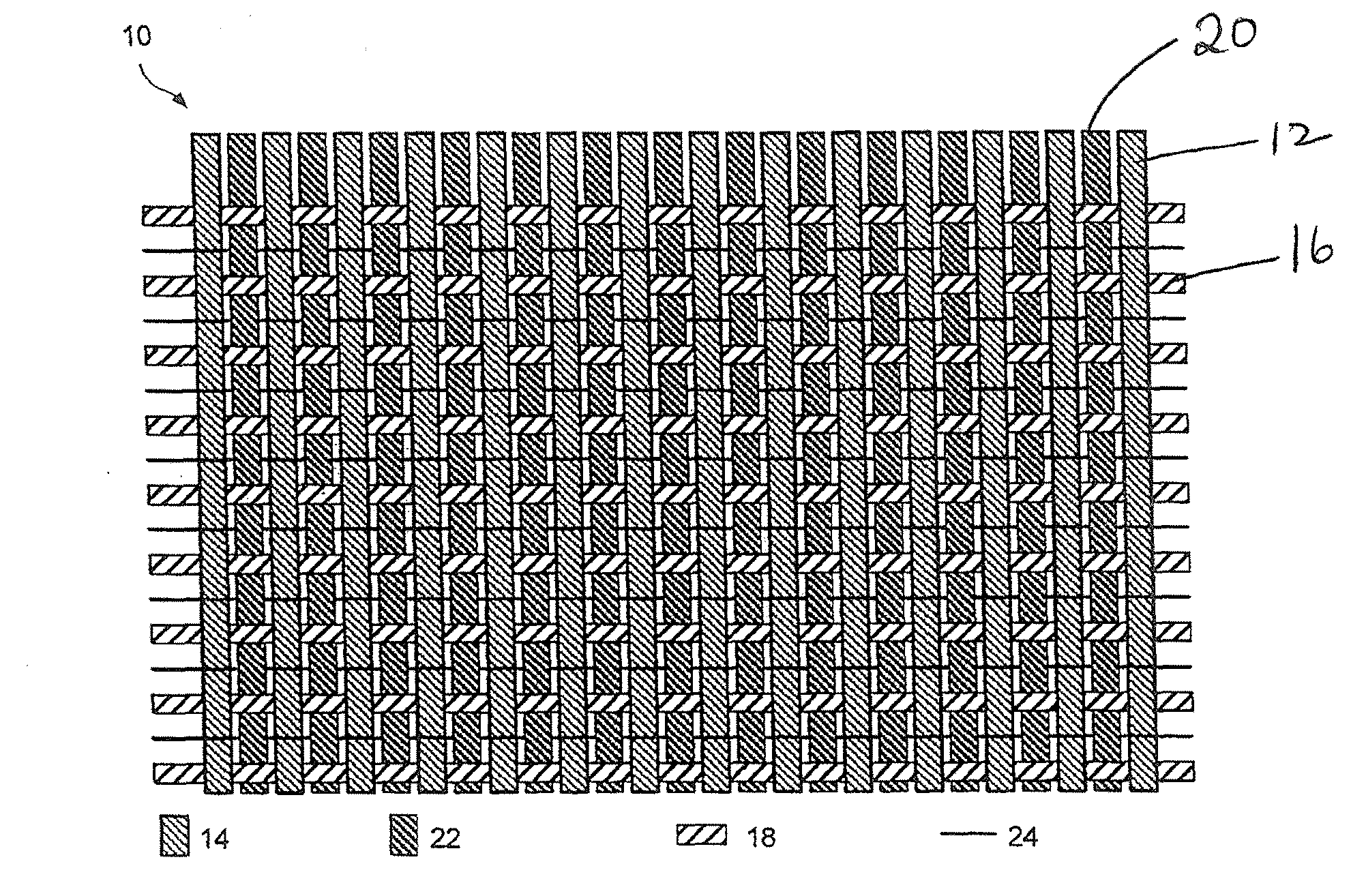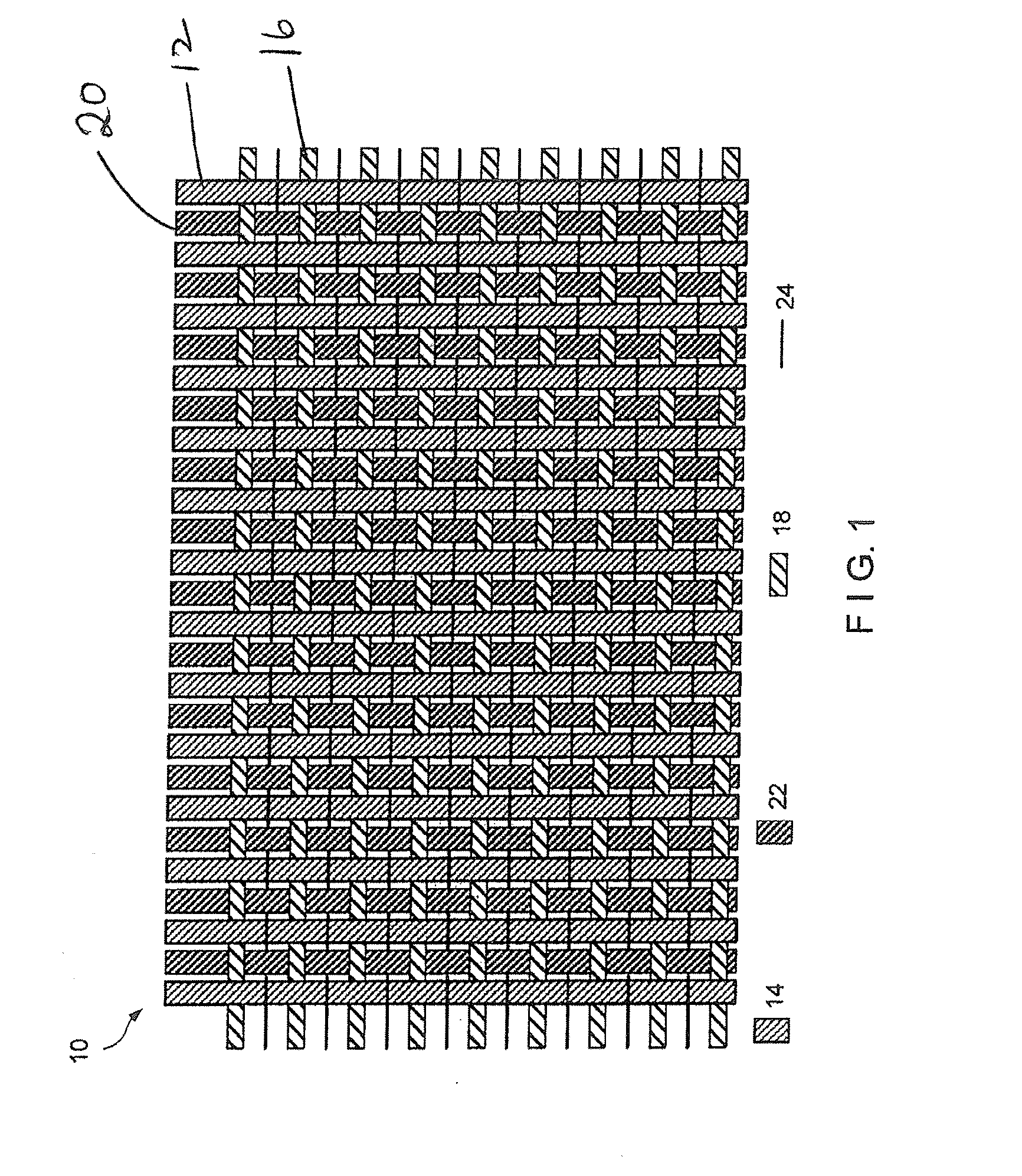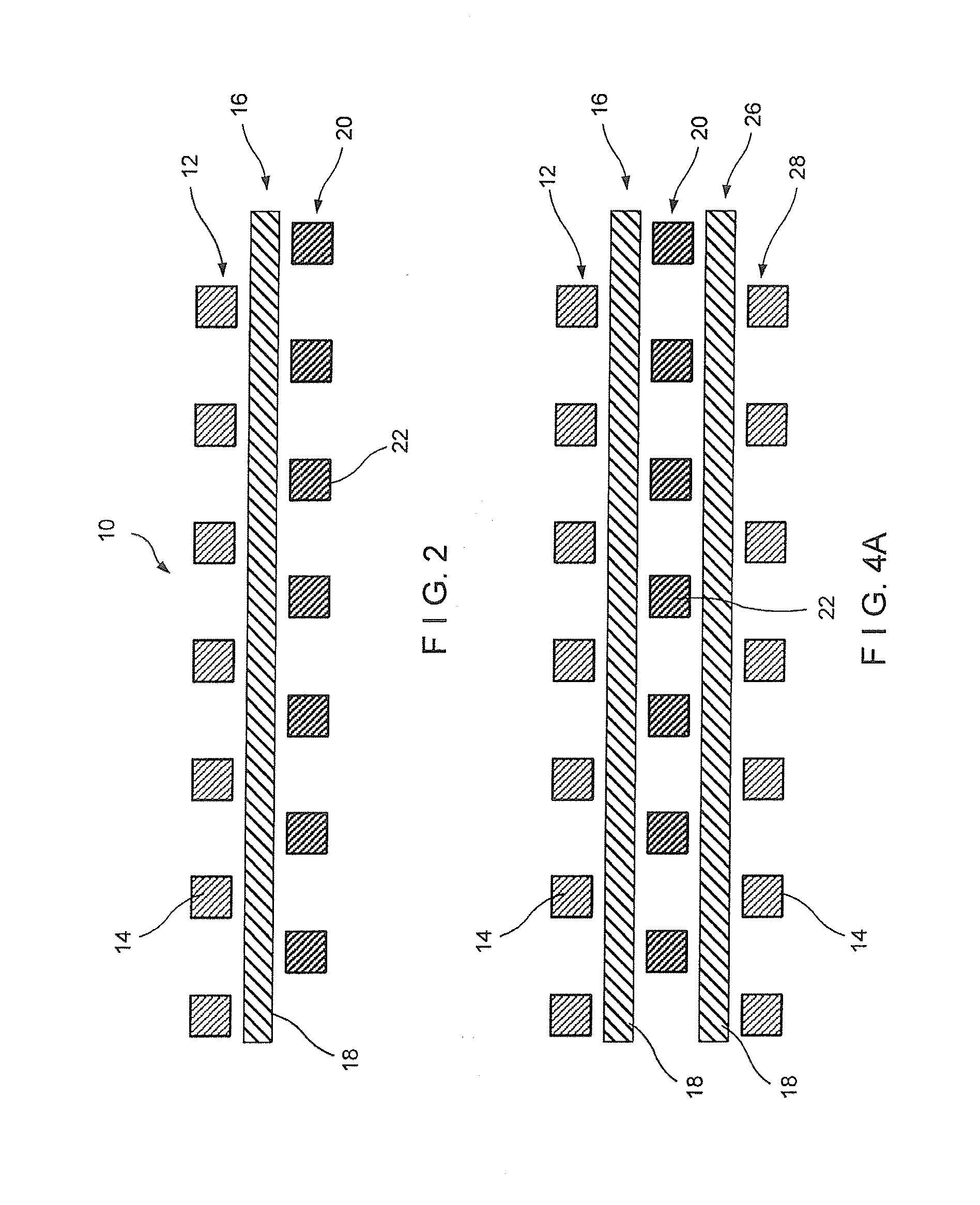Ultra-Resilient Fabric
a fabric, ultra-resilient technology, applied in the direction of resilient fabrics, weaving, press sections, etc., can solve the problems of reducing the affecting the quality of the fabric, and the density of the fabric is not ideal, so as to achieve the effect of high degree of compressibility and resiliency
- Summary
- Abstract
- Description
- Claims
- Application Information
AI Technical Summary
Benefits of technology
Problems solved by technology
Method used
Image
Examples
Embodiment Construction
[0050]Initially although a press fabric will be discussed, as aforesaid the present invention has application to other type fabrics or belts including forming fabrics, dryer fabrics, through air dryer fabrics, shoe press belts, calendar belts, or transfer belts; engineered fabrics; or fabrics used in the production of nonwovens by processes such as airlaid, melt blowing, spunbonding, and hydroentangling; or industrial process belts such as textile finishing belts, or other belts that require a high degree of compressibility and resiliency.
[0051]A hollow member that is defined as elastic in its thickness or radial direction and length or axial direction is required for all the embodiments discussed herein. The hollow elastic member can have any form as appropriate for the application and can be, for example, single monofilament, plied monofilament or multifilament, wrapped member of different materials, multicomponent member, knitted member, twisted member, or braided. The hollow ela...
PUM
| Property | Measurement | Unit |
|---|---|---|
| angle | aaaaa | aaaaa |
| angle | aaaaa | aaaaa |
| size | aaaaa | aaaaa |
Abstract
Description
Claims
Application Information
 Login to View More
Login to View More - R&D
- Intellectual Property
- Life Sciences
- Materials
- Tech Scout
- Unparalleled Data Quality
- Higher Quality Content
- 60% Fewer Hallucinations
Browse by: Latest US Patents, China's latest patents, Technical Efficacy Thesaurus, Application Domain, Technology Topic, Popular Technical Reports.
© 2025 PatSnap. All rights reserved.Legal|Privacy policy|Modern Slavery Act Transparency Statement|Sitemap|About US| Contact US: help@patsnap.com



